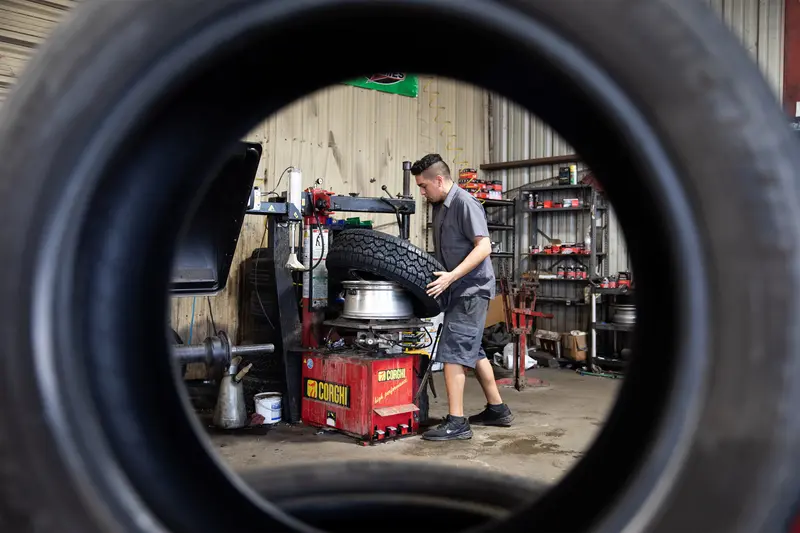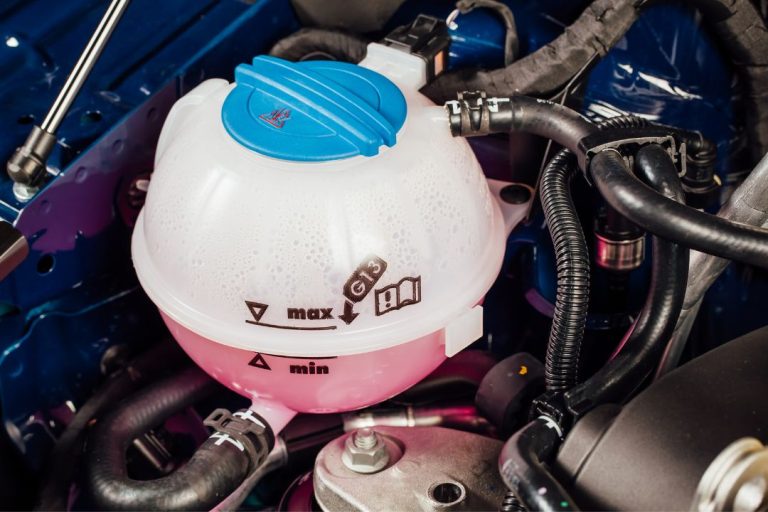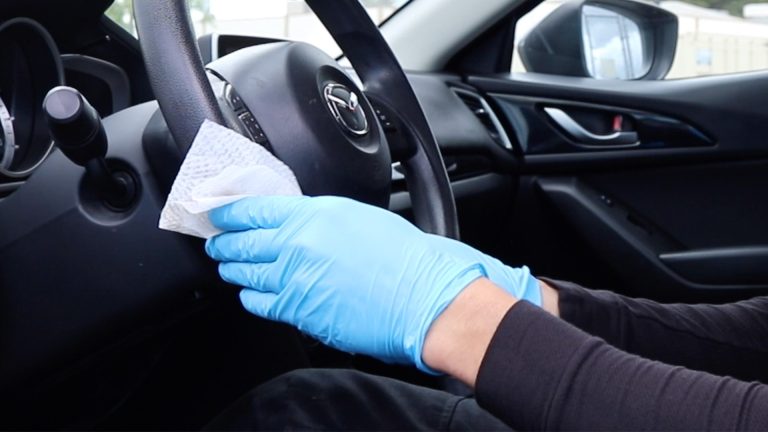What Causes a Flat Tire: The Top Reasons Revealed
Flat tires are often caused by sharp objects puncturing the tire or worn-out tread. This can result in a leak of air and a flat spot on the tire surface.
Understanding what causes a flat tire is crucial for maintaining vehicular safety and preventing unexpected breakdowns. Punctured tires are a common issue, typically caused by driving over debris like nails or glass. Proper tire maintenance, such as checking for air pressure regularly and avoiding road hazards, can help extend the lifespan of your tires and reduce the risk of flat tire incidents.
Additionally, being mindful of the condition of your tires and addressing any signs of wear and tear promptly can prevent potential flat tire problems in the future.
Common Causes Of Flat Tires
A punctured tire is a common reason for experiencing a flat tire. Sharp objects like nails or glass can puncture the rubber, leading to air leakage.
Valve damage can cause a tire to go flat due to a slow leak through the valve body or base. Corrosion or dents on the wheel mounting surface can also contribute to valve damage.
Underinflated tires are prone to flats as low air pressure makes the tire more susceptible to damage from road debris and can result in premature wear and tear.
Road hazards like potholes, sharp objects, or debris on the road can puncture tires and cause flats. It is essential to drive cautiously to avoid these hazards.
Extreme Weather Conditions
Extreme weather conditions, such as hot temperatures or severe cold, can affect tire pressure and lead to flats. Proper tire maintenance is crucial in such conditions.
Punctured Tires
Flat tires are often caused by punctures from sharp objects such as nails or glass, leading to air leaks and creating a flat spot on the tire’s surface. Defective valve cores or mounting surfaces on the wheel can also result in slow leaks or deflation, warranting timely inspection and maintenance.
Most Common Cause
most common cause of flat tires. They occur when sharp objects like nails or glass penetrate the tire, causing air leakage.Avoiding Puncture Blowouts
avoid driving over debris on roads or in parking lots. Additionally, maintaining proper tire pressure can help reduce the risk of punctures. If your tire has a slow leak through the valve core or the mounting surface is damaged, it can also lead to a flat tire even without a visible hole. Regularly checking your tires for any signs of damage is essential to prevent sudden flats. Remember, a punctured tire can be easily avoided by staying cautious on the road and keeping a check on your tire’s condition regularly.Valve Damage
Valve damage is one of the common culprits for a flat tire. The valve stem plays a crucial role in maintaining air pressure within the tire. When the valve is damaged, it can lead to a slow leak, causing the tire to go flat.
Signs Of Valve Issues
- Constant and slow air leak through the valve
- Difficulty in maintaining proper tire pressure
- Visible damage or corrosion on the valve stem
Possible Causes Of Valve Damage
- Corrosion or dents on the mounting surface of the wheel
- Impact from hitting a pothole
- Loose or faulty valve core

Credit: www.caranddriver.com
Underinflated Tires
Flat tires are often caused by underinflation, where the air pressure drops below the recommended level. This can lead to increased friction and heat buildup, making tires more susceptible to punctures from sharp objects on the road. To prevent flat tires, regularly check and maintain proper tire pressure.
Impact Of Underinflation
Underinflated tires can have a significant impact on both the performance and safety of your vehicle. When your tires are not properly inflated, several issues can arise. Firstly, underinflated tires tend to have increased rolling resistance, which means your vehicle will have to exert more energy to move forward. This leads to decreased fuel efficiency and can cause your tires to wear out faster. Secondly, underinflated tires also negatively affect your vehicle’s handling and braking capabilities. Your car may become more difficult to control, especially in wet or icy conditions, increasing the risk of accidents. Additionally, underinflation can cause uneven tire wear, leading to a shorter tire lifespan and the need for more frequent replacements.Causes Of Low Tire Pressure
There are several common causes of low tire pressure, including:- Slow leaks: Over time, tires naturally lose pressure due to small air leaks. These leaks could be caused by damaged valve stems, worn-out tire beads, or even corrosion on the wheel’s mounting surface.
- Temperature changes: As temperatures fluctuate, so does tire pressure. In colder weather, the air inside your tires contracts, leading to a decrease in pressure. It’s important to regularly check and adjust tire pressure during different seasons to ensure optimal performance.
- Neglecting maintenance: Many drivers neglect regular tire maintenance, such as checking tire pressure and inflating them to the recommended level. This can lead to gradual pressure loss and underinflation over time.
- Leaking valve cores: Faulty valve cores can cause slow leaks, resulting in underinflated tires. It’s important to regularly inspect and replace valve cores to prevent air loss.
- Improper tire bead seating: If the tire bead, which ensures an airtight seal between the tire and the wheel, is not properly seated, it can lead to air leaks and underinflation. This could be caused by improper installation or damage to the tire bead.
Road Hazards
Flat tires are often caused by sharp objects like nails or glass puncturing the tire, leading to air leakage. Other factors include bad road conditions and debris on the road, creating flat spots on the tire surface. Proper tire maintenance and avoiding road hazards can help prevent flat tires.
Impact Of Bad Road Conditions
Bad road conditions can have a significant impact on the occurrence of flat tires. When roads are poorly maintained or filled with potholes, it increases the risk of tire damage. Let’s explore some common road hazards that can lead to a flat tire.
Road Hazards Overview
Understanding the various road hazards that can cause a flat tire is crucial for every driver. By being aware of these hazards, you can take preventive measures to minimize the risk of getting a flat tire. Let’s take a closer look at some of the most common road hazards:
1. Potholes
Potholes are one of the main culprits when it comes to causing flat tires. These deep depressions in the road surface can cause your tire to lose air or even puncture. When driving, it’s important to be vigilant and avoid potholes whenever possible.
2. Debris On The Road
Debris on the road, such as nails, shards of glass, or metal objects, can puncture your tire and cause it to go flat. It’s essential to scan the road ahead and steer clear of any visible debris that could potentially damage your tires.
3. Construction Zones
Construction zones often come with their own set of hazards, including loose gravel, nails, and uneven surfaces. These conditions increase the likelihood of encountering road debris or sharp objects that can lead to a flat tire. Slow down and navigate these areas with extra caution to protect your tires.
4. Curbs And Sidewalks
While curbs and sidewalks are not exactly part of the road, they can pose a threat to your tires. Hitting a curb or driving over a sidewalk edge can cause your tire to sustain damage, leading to a flat. Stay alert and maintain a safe distance from curbs and sidewalks to prevent unnecessary tire damage.
5. Speed Bumps And Speed Breakers
Speed bumps and speed breakers are designed to slow down vehicles, but they can also cause flat tires if not approached carefully. Driving over these obstacles at a high speed can put excessive force on your tires, potentially causing them to burst or lose air. Reduce your speed when encountering speed bumps to protect your tires.
Conclusion
Being aware of the road hazards that can cause flat tires is essential for every driver. By avoiding potholes, debris on the road, and other potential hazards, you can significantly reduce the risk of experiencing a flat tire. Taking precautionary measures and practicing safe driving habits can help ensure a smooth and uninterrupted journey.

Credit: wfca.com

Credit: www.propublica.org
Frequently Asked Questions For What Causes A Flat Tire
Why Would A Tire Suddenly Go Flat?
A tire may go flat due to sharp objects like nails or glass puncturing it, causing a leak. It could also be due to defects in the tire’s rubber or valve damage. Road hazards, bad conditions, and extreme temperatures can all contribute to sudden flat tires.
What Is The Most Common Cause Of A Flat Tire?
The most common cause of a flat tire is a puncture from a sharp object like nails or glass. Avoid driving over debris to prevent punctures and flat spots on the tire surface.
Why Did My Tire Go Flat Without A Hole?
A tire can go flat without a hole due to worn tread or a defect in the rubber. Sharp objects or road hazards can puncture the tire, causing it to leak air. Another possibility is a damaged valve or mounting surface on the wheel.
Improper inflation can also lead to flat tires.
Can A Tire Deflate On Its Own?
Yes, a tire can deflate on its own due to worn tread, sharp object punctures, or valve issues.
Conclusion
Flat tires can happen due to a variety of reasons, from sharp objects on the road to valve damage. Understanding these causes can help you take preventative measures. Regular tire maintenance and avoiding road hazards can reduce the risk of experiencing a flat tire.
It’s essential to stay vigilant and address any potential issues with your tires promptly.






